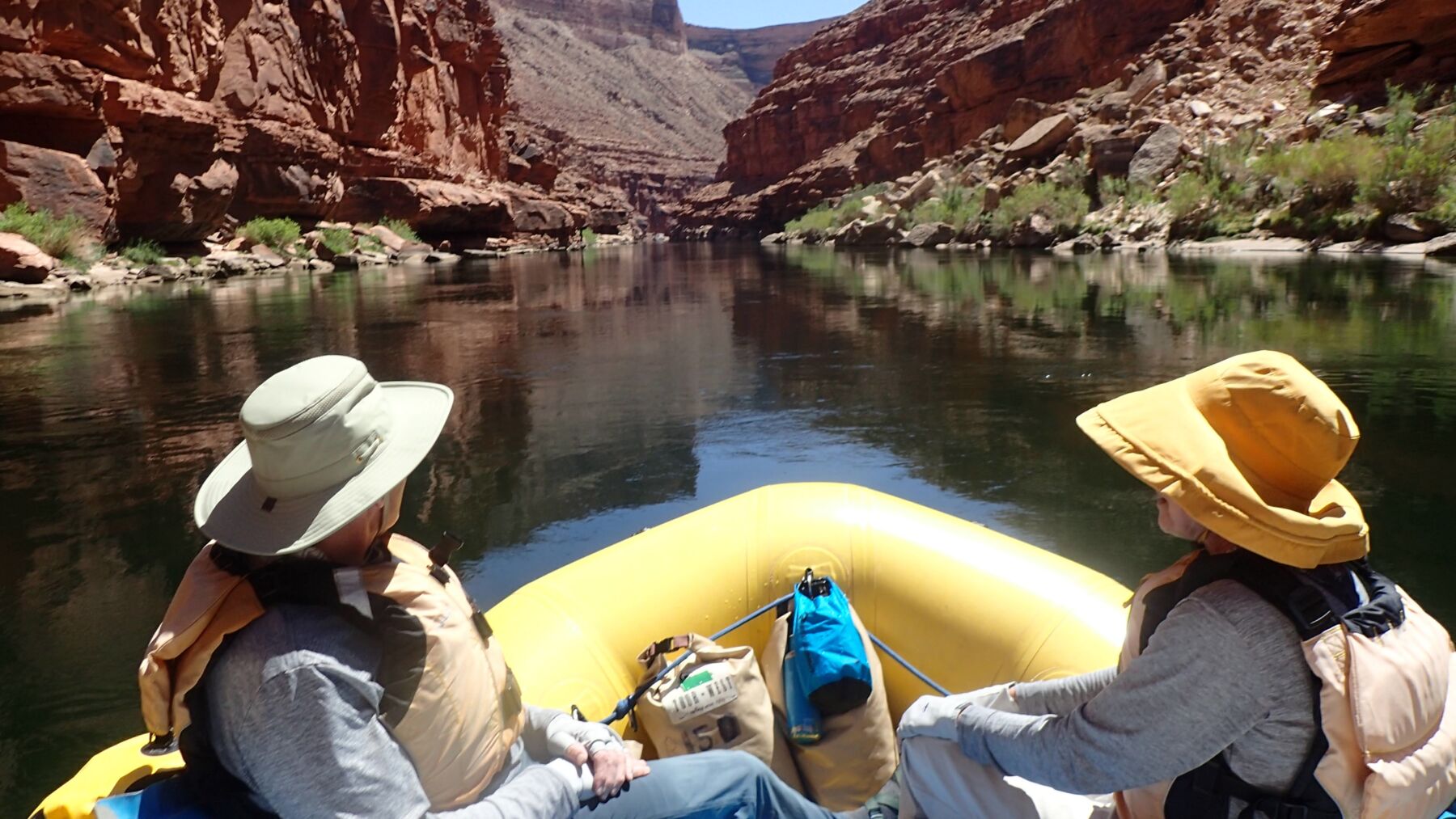
Best Sunscreens
for Rivers & Oceans
When playing in rivers and oceans, we want sunscreen that will protect us as well as the criters in the water. Testing by the EWG (Environmental Working Group) and Consumer Reports points towards zinc based sunblocks being the safest and best sunscreen options.
Find Shade
While sunscreens block some of the suns rays, covering up and finding shade are much better solutions to the sun. There are many clothing options to cover up for the sun. On the water you’ll notice most guides living in sun hoodies and a large hat. It also helps to have shorts that cover your knees when sitting and a pair of polarized sunglasses. That way you only need to apply sunscreen in a few spots.
Those shady spots are particularly valuable between 10 AM and 4 PM when the sun is at it’s strongest.
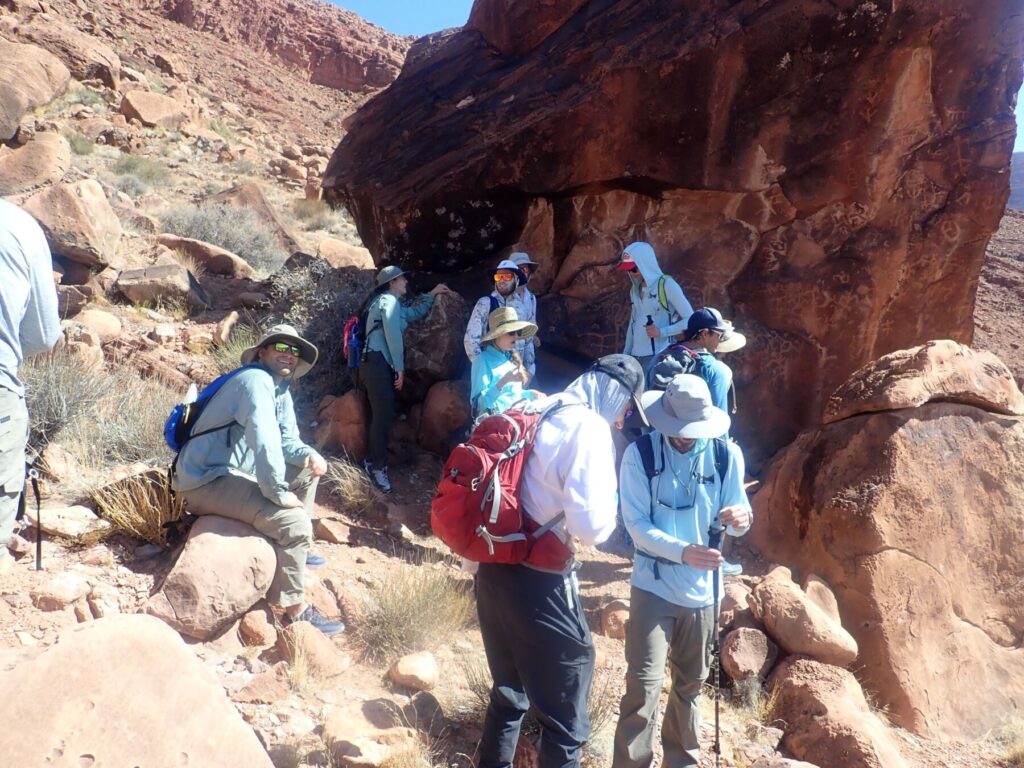
No Spray Sunscreen
Spray sunscreens have come under some negative light in recent years as Australian studies have shown that people using spray sunscreen don’t use enough. Subsequently, the country now recommends only pastes and lotions. In addition, aerosol sprays have been linked with lung cancer in testing because of the inhaling the toxic sunscreen chemicals.
Finally, multiple companies have recently recalled their spray sunscreens because independent studies have found a substantial portion of aerosols contain a toxic benzene contaminant. As a guide I’ll say the spray sunscreen users are much like the cigarette smokers who don’t realize everyone downwind of them is dealing with their lack of thoughtfulness.
Layer on the Sunscreen
The problem with not applying enough sunscreen while most common with spray users is not limited to them. When a person only applies 1/2 the sunscreen that is optimal, the SPF factor becomes square rooted. An SPF of 50 would end up being a protection of around SPF 7. Make sure to use a thick layer of sunscreen.
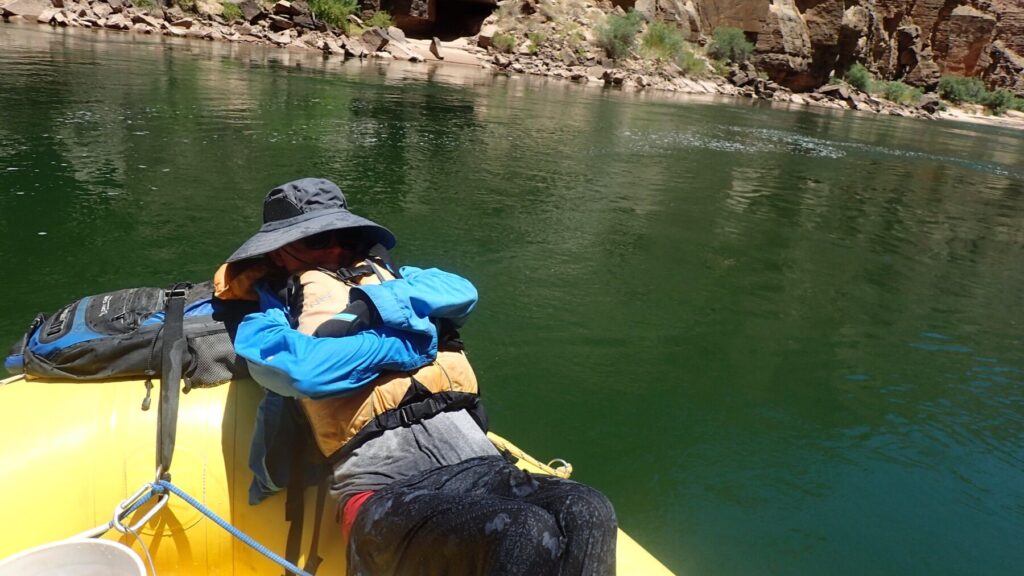
SPF
Both the EWG and Consumer Reports have found through testing that the listed SPF on sunscreens is typically much higher than their actual SPF. There is no oversight in the testing process as the manufacturers self test. Therefore, it is as valuable to compare the percentage of zinc in a mineral sunscreen as it is to compare the SPF. Unfortunately, the other mineral titanium only really blocks UVB well and UVA is over 90% of the light that hits our skin. While titanium only sunscreens do well with the SPF test the don’t protect against the long term damage done by UVA to the skin.
Our Favorite Sunscreens for River and Oceans
Most of these sunscreens will cause your face to be white and it will be difficult to remove. However, mineral sunscreens that aren’t pasty don’t seem as protective. Zinc and titanium sunblock also protect dry skin since they form a protective barrier on the surface. In general, the sunscreens that have fewer ingredients are usually easier on sensitive skin.
After our list of recommended sunscreens we have for more information about why mineral sunscreens like zinc are the only reef friendly options. In addition, we discuss the additional problems for humans with chemical sunscreens (non-mineral sunscreens).
Badger 50 SPF Tin
25% non-nano Zinc
SPF 50
4 ingredients
uncoated mineral zinc oxide, Sunflower Seed Oil, Beeswax, Tocopherol (Sunflower Vitamin E)
Reef friendly and water resistant 80 minutes. Badger uses a “clear” zinc that is non-nano. Unscented
$15, 2.4 ounces, $6.25/ounce
Raw Love Sunscreen
22.5% non-nano Zinc
SPF 35
12 ingredients
non-nano zinc oxide, coconut oil, extra virgin olive oil, jojoba oil, sesame oil, beeswax shea butter, eucalyptus oil, lavender oil, peppermint oil, vitamin E oil, sunflower seed oil, carrot seed extract
Reef friendly and water resistant 40 minutes. Unscented
$26, 4 ounces, $6.50/ounce
Waxhead Sunscreen
22.5% non-nano Zinc
SPF 30
Tinted Version
6 ingredients
non-nano zinc oxide, Virgin coconut oil, Beeswax, aqua,
ethanol, vanilla planifolia extract
Reef friendly and water resistant 80 minutes. Unscented
$24, 3.7 ounce, $6.50/ounce
EiR NYC Surf Mud Pro Stick
25% non-nano Zinc
5% non-nano Titanium
SPF 50
6 ingredients
non-nano zinc oxide, non-nano titanium, Beeswax, Organic Cocoa Butter, Organic Coconut Oil, Organic Cocoa Fruit Powder
Reef friendly and water resistant 80 minutes. Unscented
$30, 1.5 ounces, $20/ounce
Badger Sunscreen Cream
22.5% non-nano zinc
SPF 40
4 ingredients
uncoated mineral zinc oxide, organic sunflower oil, organic beeswax, sunflower vitamin E.
Reef friendly and water resistant 80 minutes.
Unscented, Badger uses a “clear” zinc that is non-nano.
$15.29, 2.9 ounces, $5.30/ounce
Reef Repair Sunscreen
25% non-nano zinc
SPF 50
13 ingredients
non-nano zinc oxide, coconut oil, avocado oil, vegetable emulsifying wax NF, shea butter, red raspberry seed oil, glyceryl oleate citrate & caprylic/capric triglyceride, glycerin, beeswax, ethylhexylglycerin & propanediol, polyhydroxystearic acid, sodium gluconate, coconut essential oil, vanilla essential oil
Reef friendly and water resistant 80 minutes.
Vanilla Scented
$20, 4 ounces, $5/ounce
Thinksport Sunscreen
20% non-nano Zinc
SPF 50
19 ingredients
non-nano zinc, caprylic triglyceride, polyglycery-4
isosterate, cetyl dimethicone, hexyl
laurate, glycerin, hycrogenated
methyl, pinewood resin, epsom salt,
caprylhdroxamic acid, glyceryl
caprylate, sorbitan sesquioleate,
currant fruit, sunflower oil, jojoba
seed oil, tocopherol, olive fruit oil,
hyalurounic acid, grapefruit
Reef friendly and water resistant 80 minutes.
Unscented
$18, 6 ounces, $3/ounce
Zinc Oxide and Mineral Sunscreens
Titanium dioxide and zinc oxide are the two active ingredients labeled as “mineral sunscreens.” Sunscreens may have other active chemical ingredients in addition to zinc and/or titanium but still call themselves mineral sunscreens.
Zinc oxide blocks high amounts of both UVA and UVB light while titanium dioxide blocks even more UVB than zinc but doesn’t block enough UVA light (90% of light is UVA). Zinc and titanium stay on the surface of the skin unlike chemicals sunscreens which are absorbed through your skin.
Ideally sunscreens would be 25% non-nano zinc oxide and with potentially 5 to 7% non-nano titanium dioxide. While numerous sunscreens claim SPF 50 with the 20% zinc oxide, Consumer Reports and EWG studies say that most likely these sunscreens aren’t even close to that good. However, if a mineral sunscreen doesn’t leave your face a little white most likely it is not doing much protection.
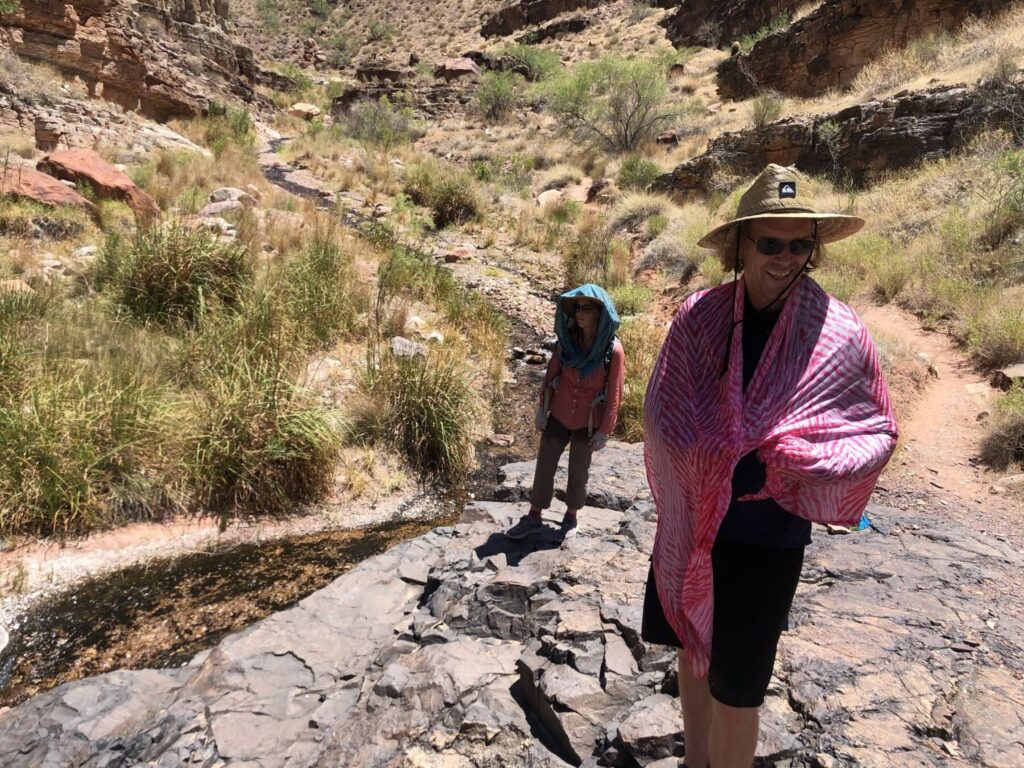
Avoiding Other Active Ingredients
Titanium and zinc oxide are the only active sunscreen ingredients approved by the FDA as safe and effective. Other active ingredients are still being studied by the FDA. But other organizations have studies the non-mineral active ingredients and found some disturbing problems. These chemicals are absorbed into the bloodstream through the skin with some being carcinogenic, others hormoe-disrupting and linked to birth defects in babies. However, Mineral based sunscreens (zinc and titanium) are not absorbed through the skin and believed to be non-toxic.
Reef Safe Sunblock
Large particled non-nano zinc and titanium are the only active ingredient currently considered reef friendly. Sunscreens like SunBum claim to be reef safe when the active ingredients (in SunBum’s case Octocrylene 10.00%) are hazardous for reefs.
Chemicals bad for reefs
List of sunscreen chemicals that are harmful for reefs.
Octinoxate, Octisalate, Octocrylene, Oxybenzone, 4-Methylbenzylindene camphor, 3-Benzylidene camphor, Avobenzone, Benzophenone-1, Benzophenone-8, Homosalate, OD-PABA, Paba, Parabens, Triclosan, Microplastics (like “exfoliating beads”) and nano-zinc or nano-titanium.
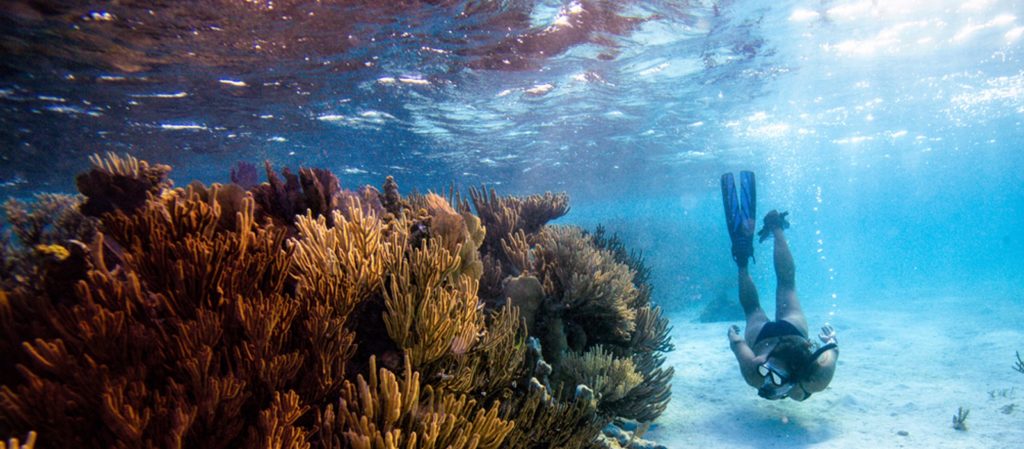
Final Thoughts on Sunscreen
The best sunscreen options for human and wildlife health use zinc as the primary active ingredient. Ideally, a sunscreen will have at least 20% zinc and maybe some titanium in addition. However, staying out of the sun and wearing clothes that protect from the sun will be better than any sunscreen for preventing sunburns and skin damage. Check to be sure the sunscreen you are buying has reef friendly ingredients at Save the Reef.org.











